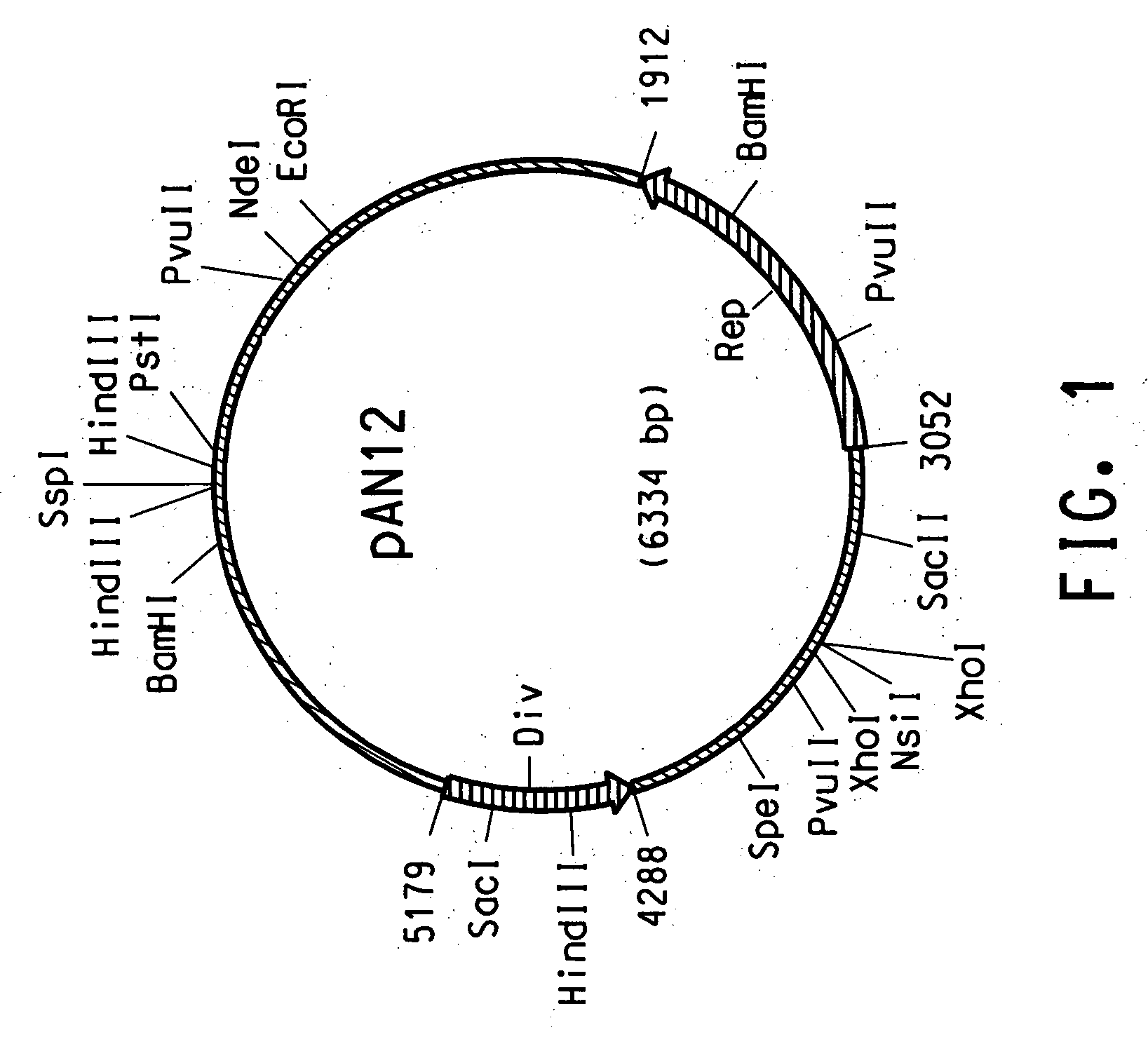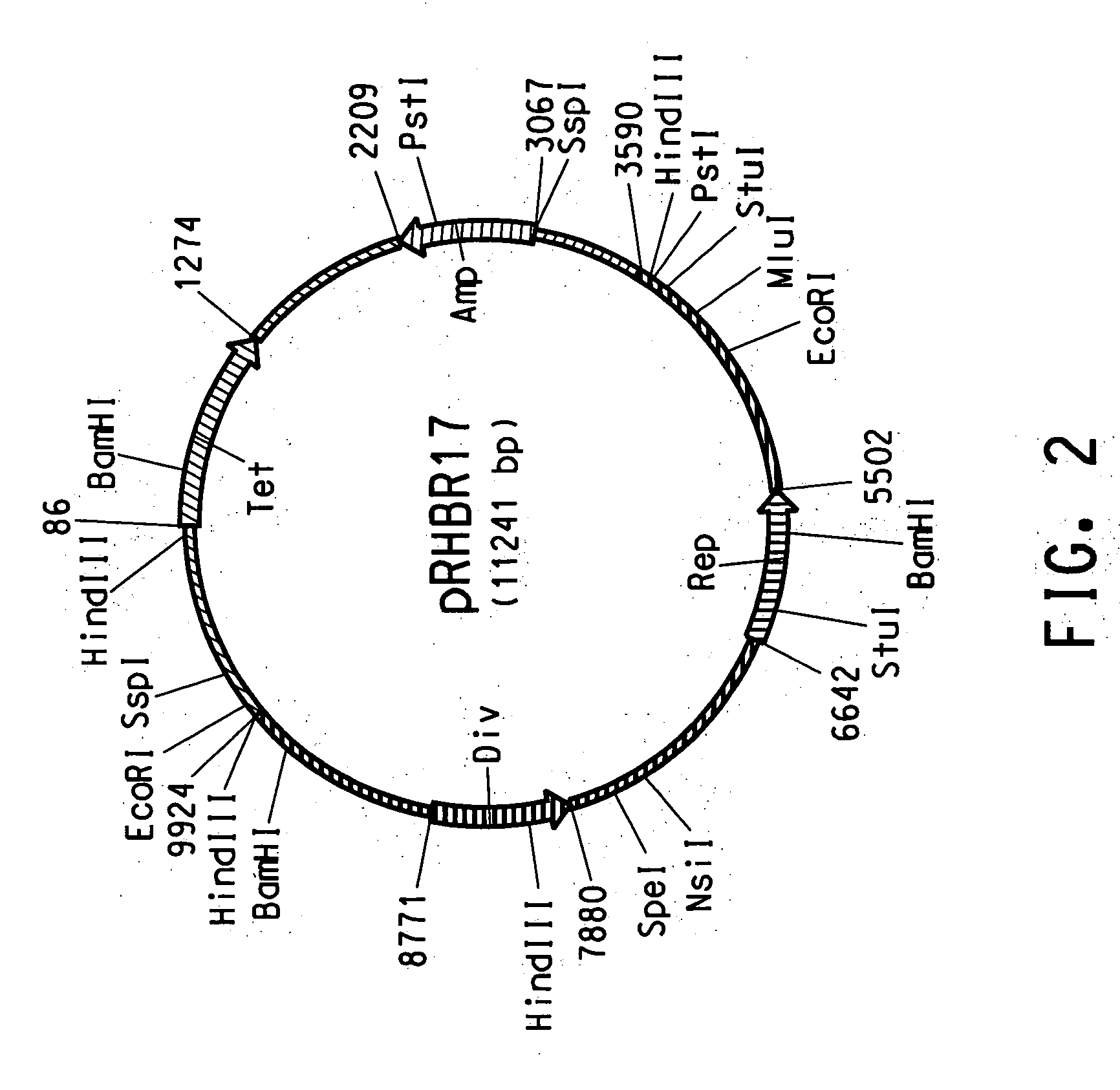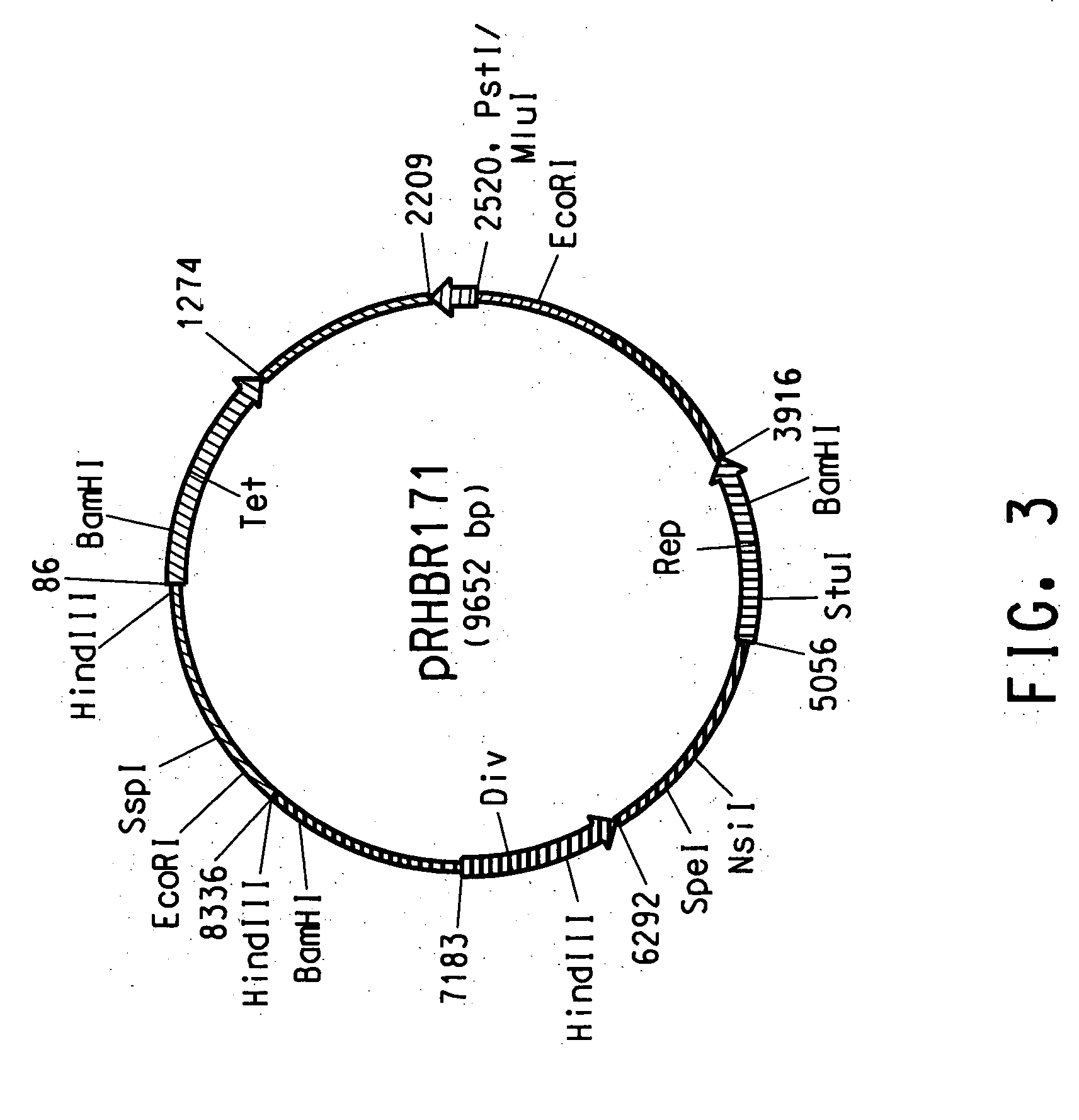Rhodococcus cloning and expression vectors
a technology of rhodococcus and expression vectors, applied in the field of microorganisms, can solve the problems of limited commercially available tools for genetic manipulation of rhodococcus and like organisms, limited economic and safety, and limited application prospects, etc., to achieve general utility for plasmid replication and stability, and maintain plasmid stability
- Summary
- Abstract
- Description
- Claims
- Application Information
AI Technical Summary
Benefits of technology
Problems solved by technology
Method used
Image
Examples
example 1
Isolation and Characterization of Strain AN12
[0133] This Example describes the isolation of strain AN12 of Rhodococcus erythropolis on the basis of being able to grow on aniline as the sole source of carbon and energy. Analysis of a 16S rRNA gene sequence indicated that strain AN12 was related to high G+C Gram positive bacteria belonging to the genus Rhodococcus.
[0134] Bacteria that grow on aniline were isolated from an enrichment culture. The enrichment culture was established by inoculating 1 ml of activated sludge into 10 ml of S12 medium (10 mM ammonium sulfate, 50 mM potassium phosphate buffer (pH 7.0), 2 mM MgCl2, 0.7 mM CaCl2, 50 μM MnCl2, 1 μM FeCl3, 1 μM ZnCl3, 1.72 μM CuSO4, 2.53 μM COCl2, 2.42 μM Na2MoO2, and 0.0001% FeSO4) in a 125 ml screw cap Erlenmeyer flask. The activated sludge was obtained from a wastewater treatment facility. The enrichment culture was supplemented with 100 ppm aniline added directly to the culture medium and was incubated at 25° C. with recipro...
example 2
Isolation and Partial Sequencing of Plasmid DNA from Strain AN12
[0137] The presence of small plasmid DNA in the Rhodococcus AN12 strain isolated as described in Example 1 was suggested by Applicants' observation of a low molecular weight DNA contamination in a genomic DNA preparation from AN12. Plasmid DNA was subsequently isolated from AN12 strain using a modified Qiagen plasmid purification protocol outlined as follows. AN12 was grown in 25 ml of NBYE medium (0.8% Nutrient Broth, 0.5% Yeast Extract and 0.05% Tween80) at 30° C. for 24 hours. The cells were centrifuged at 3850×g for 30 min. The cell pellet was washed with 50 mM sodium acetate (pH 5) and 50 mM sodium bicarbonate and KCl (pH 10). The cell pellet was then resuspended in 5 ml Qiagen P1 solution with 100 μg / ml RNaseA and 2 mg / ml lysozyme and incubated at 37° C. for 30 min to ensure cell lysis. Five ml of Qiagen P2 and 7 ml of Qiagen N3 solutions were added to precipitate chromosomal DNA and proteins. Plasmid DNA was rec...
example 3
Complete Sequencing and Confirmation of a Cryptic Plasmid in Strain AN12
[0139] The sequences generated from the two HindIII fragments of the plasmid DNA were used to search the DuPont internal AN12 genome database. All three sequences had 100% match with regions of contig 2197 from assembly 4 of AN12 genomic sequences. Contig 2197 was 6334 bp in length. There were randomly sequenced clones in the database spanning both ends of contig 2197, indicating that this is a circular piece of DNA. Applicants have designated the 6334 bp circular plasmid from strain AN12 as pAN12. The complete nucleotide sequence of pAN12 designating the unique SspI site as the position 1 and is set forth in SEQ ID NO:5. One end of the 1.7 kb HindIII insert (SEQ ID NO:15) matched with the 6313-5592 bp region of the complement strand of pAN12 sequence (SEQ ID NO:5). Another end of the 1.7 kb HindIII insert (SEQ ID NO:16) matched with the 4611-5133 bp region of pAN12 sequence (SEQ ID NO:5). One end of the 4.4 kb...
PUM
| Property | Measurement | Unit |
|---|---|---|
| temperature | aaaaa | aaaaa |
| temperature | aaaaa | aaaaa |
| temperature | aaaaa | aaaaa |
Abstract
Description
Claims
Application Information
 Login to View More
Login to View More - R&D
- Intellectual Property
- Life Sciences
- Materials
- Tech Scout
- Unparalleled Data Quality
- Higher Quality Content
- 60% Fewer Hallucinations
Browse by: Latest US Patents, China's latest patents, Technical Efficacy Thesaurus, Application Domain, Technology Topic, Popular Technical Reports.
© 2025 PatSnap. All rights reserved.Legal|Privacy policy|Modern Slavery Act Transparency Statement|Sitemap|About US| Contact US: help@patsnap.com



